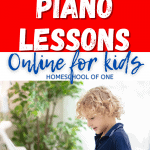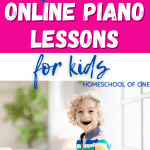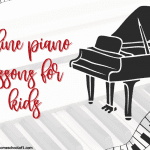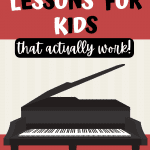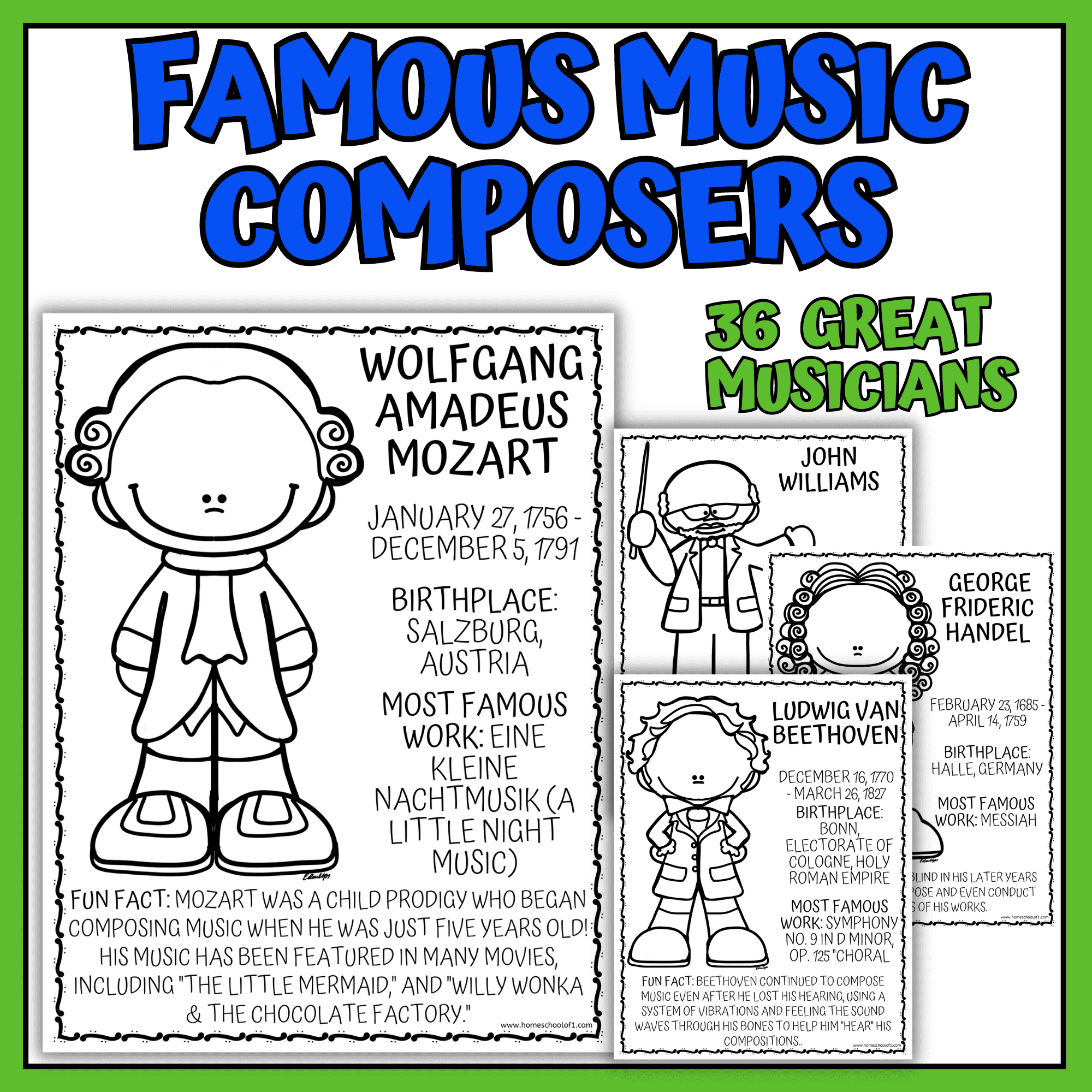The Best Online Piano Lessons for Kids We’ve Tried – and What Worked
We’ve tried a lot of online piano lessons for kids over the years. Some were fun but didn’t stick, others actually helped my son build real skills and confidence.
If you’re looking for a program that works at home and keeps your child engaged, this guide breaks down the best options we’ve found.
From structured courses to game-like apps, these online piano lessons make learning music easier (and more fun) for kids of all ages.
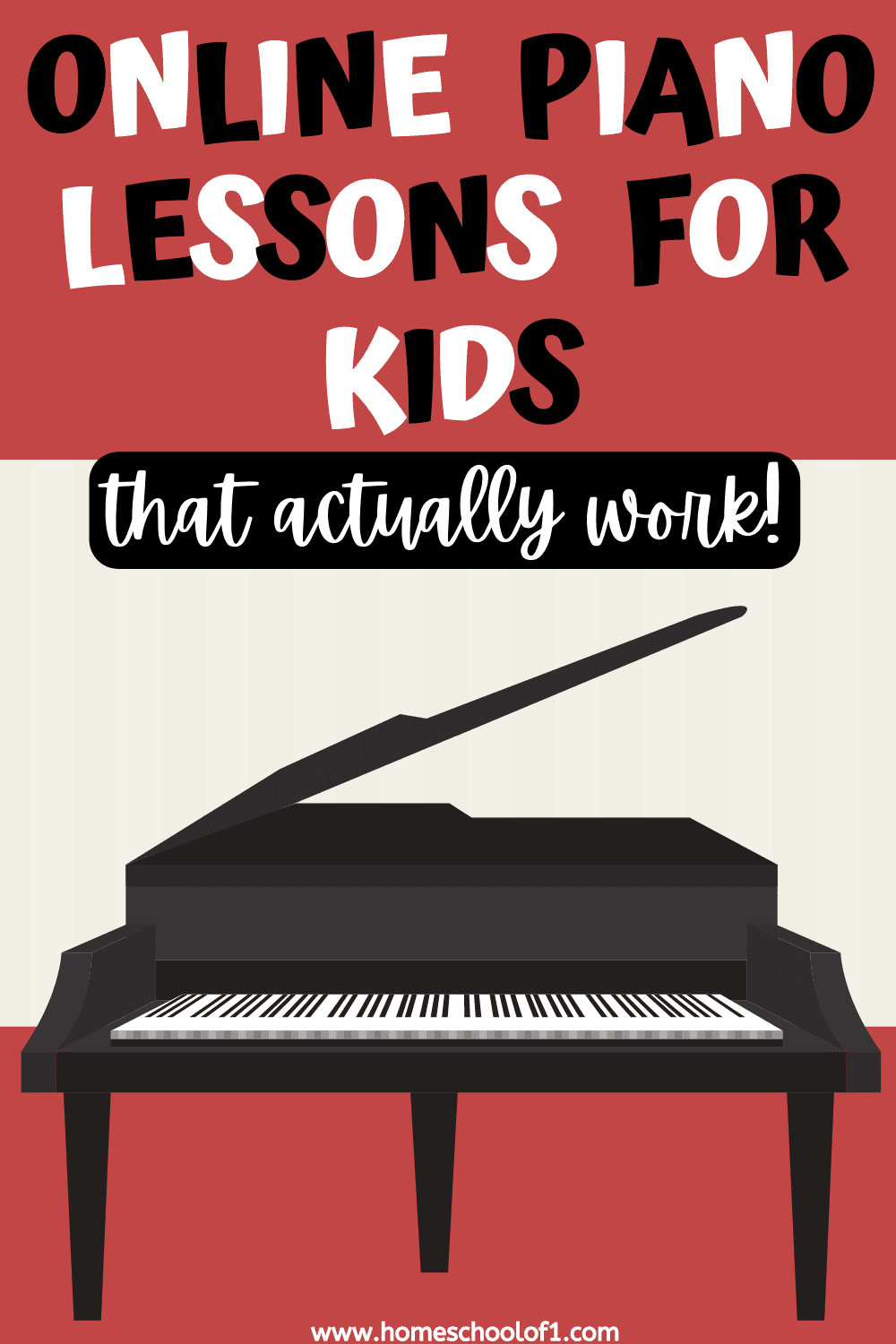
**This post may contain affiliate links. As an Amazon Associate and a participant in other affiliate programs, I earn a commission on qualifying purchases.**
Online Piano Lessons We’ve Tried (and What Actually Worked)
Over the years, we’ve tested quite a few programs. Some free, some paid, and all aimed at helping kids learn piano from home. Here are the ones that stood out:
Hoffman Academy
Hoffman Academy was the first program that truly worked for us, and the one we’ve come back to the most. The lessons are short, upbeat, and kid-friendly, which made it easy for my son to stay focused without getting overwhelmed.
What stood out most was how they teach not just songs, but music theory, rhythm, and technique, in a way that feels playful, not dry. The free tier gave us plenty to start with, but the premium membership unlocked practice tools, games, and printables that really added value.
If you’re looking for an online piano program that balances structure with fun, this is the one I recommend most.
You can check out Hoffman Academy here and try their free lessons to see if it’s the right fit.
Piano Marvel
Piano Marvel is great if your child wants structure and clear progress. It gives instant feedback after each exercise, which helped my son understand what to fix without me needing to step in. It feels a bit more formal, so better for kids who enjoy goals and challenges.
Simply Piano by JoyTunes
Simply Piano by JoyTunes is a great choice if your child loves apps. It listens while they play and gives real-time encouragement. My son liked the gamified approach—he was more excited to “level up” here than in other programs. It works best with a keyboard that connects to a tablet or phone.
Flowkey
Flowkey is perfect for kids who already know a few basics and just want to play songs they love. The library has a huge variety, from pop to classical, and my son used it as a supplement when he wanted to play something new. It’s not a full course, but it’s great for variety.
Outschool
Outschool has been a nice option when we’ve wanted more personal interaction. We’ve tried both group classes and one-on-one lessons. Some teachers were a better fit than others, but the variety of styles and flexibility in scheduling made it worth exploring. Bonus: the classes often cover music theory alongside playing.
Making Music Fun
Making Music Fun is better as a supplement than a full course. We used their printable sheet music and games during quiet time or as a fun break from structured lessons. It’s ideal for younger kids (K–6), especially if you’re looking for free ways to introduce basic concepts.
Merriam Music
Merriam offers a trial lesson, which helped us test the waters before committing. Their approach feels more traditional, which can work well if your child thrives with consistent structure. It wasn’t the right fit for us long-term, but I appreciated their focus on technique and creativity.
Playground Sessions
Playground sessions, co-created by Quincy Jones, leans heavily into a “learn by playing” model with real-time feedback and popular songs. My son liked seeing his accuracy scores improve, and I liked that it didn’t rely on dry drills. Great if your child is motivated by music they already know.
Piano For All
Piano For All felt more like a self-paced workbook with video support. It’s comprehensive, covering everything from classical to blues, but may be better suited for older kids or teens. We used it when my son was ready for more advanced material and wanted to explore different styles.
Musiah
Musiah’s AI teacher felt surprisingly real. The program corrects mistakes, tracks progress, and even encourages kids when they’re stuck. It was a little intense for us at first, but if your child enjoys structured learning and responds well to feedback, it’s definitely worth a try.
Piano Nanny
We turned to Piano Nanny when looking for a completely free, beginner-friendly option. The site is older, but the lessons are solid and easy to follow. Great if you’re just getting started and want to keep things simple.
Piano Lessons 4 Children
Piano Lessons 4 Children is designed specifically for young learners. The lessons are short, clear, and build up gradually. We didn’t stick with it long-term, but it’s a nice way to test the waters if your child is brand new to piano.
Zebra Keys
Zebra Keys is another good free resource. The interface isn’t flashy, but the content covers basics well. My son used the interactive tools to practice note reading early on, and they helped reinforce what he was learning elsewhere.
Great Bend Center for Music
If you’re looking for something more community-focused, Great Bend Center for Music is a nice option. Their virtual lessons include group engagement and encourage creativity over just skill-building. We didn’t use it regularly, but I liked their gentle, supportive teaching style.
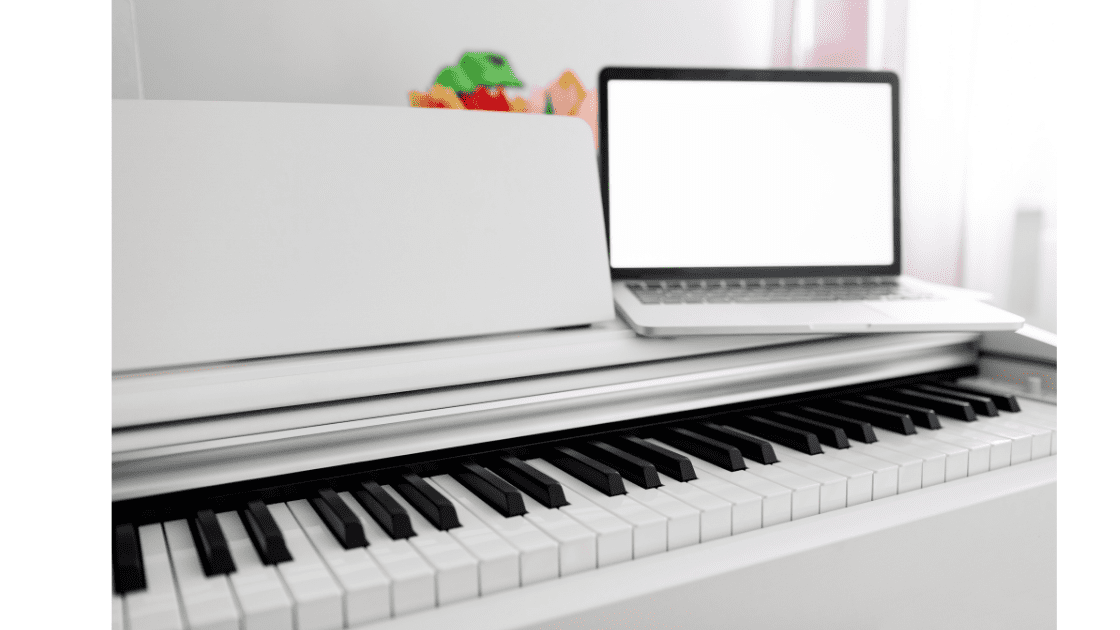
What to Look For in a Good Online Piano Program
After trying so many online music lessons over the years, a few features really stood out as must-haves, especially for kids learning at home:
- Real-time feedback is a game changer. Programs that listen as your child plays and offer corrections on the spot make a huge difference. It’s like having a teacher right there, helping them improve without getting frustrated.
- The lessons need to be fun. If it feels like schoolwork, most kids will check out. The best platforms we’ve used include songs they actually want to play, games, and light challenges that make practice feel like playtime.
- A mix of skills keeps things balanced. Technique is important, but so is music theory, reading sheet music, and even a bit of improvisation. We’ve had the most success with programs that combine all of these in a natural way.
- Look for teachers who understand how kids learn. Some platforms are designed by music educators who know how to keep things engaging and age-appropriate. That made all the difference for us.
- Progress tracking helps with motivation. Seeing their improvement visually, whether it’s badges, levels, or practice streaks, has helped my son stay excited and goal-focused.
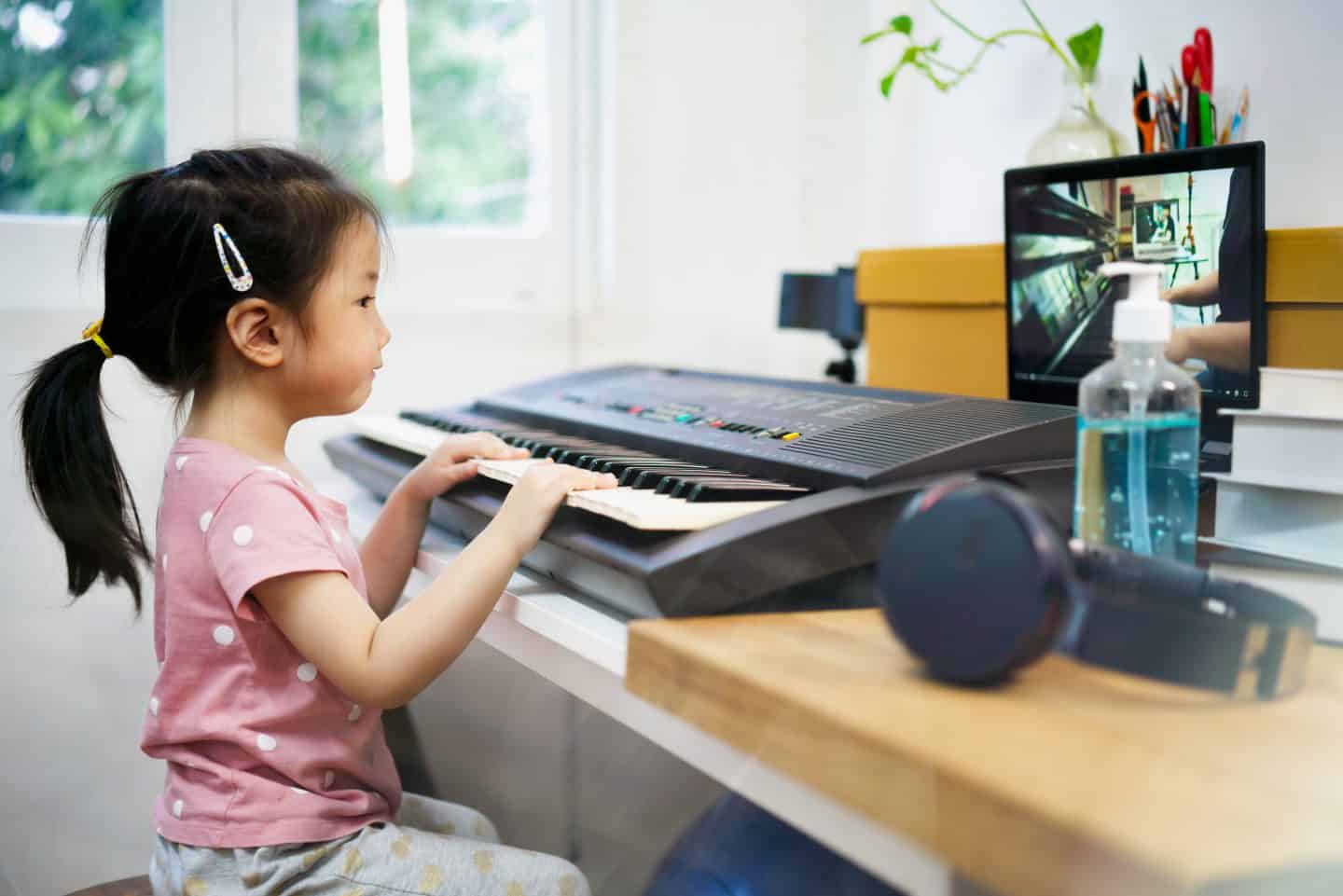
Why Learning Piano Is Worth It
Piano has given my son more than just music skills, it’s helped in ways I didn’t expect.
It’s improved his focus and memory, especially when working through tricky pieces. He’s more patient now, too. Learning that progress comes with practice, not instant results.
Music’s also become a great emotional outlet. When he’s frustrated or overstimulated, sitting at the piano helps him reset and feel more in control.
I’ve noticed his coordination and fine motor skills have sharpened from playing regularly, and improvising little tunes has sparked his creativity in other areas too. From writing stories to trying new art projects.
Famous composers research projectFamous music composers coloring pages
Keeping Piano Lessons on Track (Even When It Gets Tough)
Like anything new, learning piano comes with ups and downs. What’s helped us most is building a regular practice habit, nothing rigid, just a routine that fits into our week. Some days it’s ten minutes, other days he plays longer because he’s into a song.
When motivation dips (and it will), we mix things up: a new style, a funny song, or something he gets to pick himself. Letting him explore different genres or improvise keeps things interesting and reminds him that music is meant to be fun.
Reading music was tricky at first, so we leaned on flashcards and apps to reinforce it. Breaking things down into bite-sized wins, like mastering just the left hand, helped build confidence without overwhelm.
A decent digital piano made a big difference too. Once we upgraded to one with weighted keys, he started developing better technique and tone.
And honestly? Just being present, listening, clapping after a song, and showing interest, has gone further than any app or method. It’s the little bits of encouragement that keep them coming back to the keys.
Last Updated on 15 May 2025 by Clare Brown

